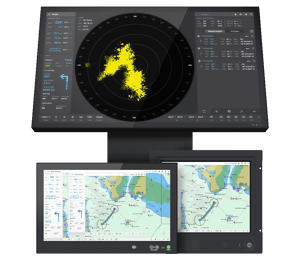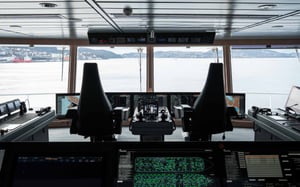
A QUICK GUIDE TO
MARINE MONITORS
All professional vessels, and the mariners who operate them, rely on visualisation devices. Use this guide to familiarise yourself with the key characteristics and options you will encounter when choosing marine monitors for your vessel.
To browse our portfolio of monitors, please click here.
Screen size
Monitor sizes tend to reflect the analogue instruments they replace. Gauges and control panels generally need smaller monitors, while nautical charts benefit from larger surface areas.
Hatteland Technology’s monitor portfolio ranges from 8–65 inches.
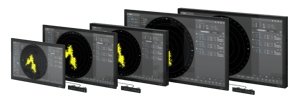
Interaction
Though analogue systems are still used, mariners increasingly use digital interfaces (monitors, panel computers) to evaluate, control, and access the various onboard systems.
Options for interaction include direct (touch, tactile) or remote (console buttons, mouse, joystick, keyboard).
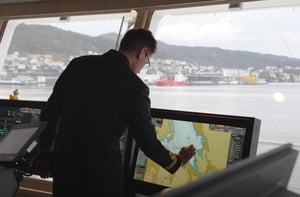
Resolution and graphics
Screen resolution can make a big difference for certain onboard applications.
Navigation monitors must produce crisp charts (ECDIS) with discernible objects. Our chart table models are 4K for that reason.
For instrument panels / automation applications, HD or even standard VGA usually is sufficient.
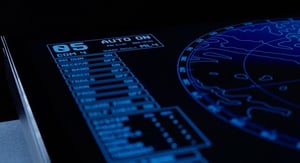
Aesthetics
Traditionally, marine monitors have been more about what you see than how you look. But who says you can’t have the best of both worlds?
Our Series X Multi-Vision Displays/Monitors combine sleek appearance with first-rate performance. It is as popular in Monaco Bay as it is at Peterhead.

Robustness
Onboard monitors must endure the physical strain the sea will inevitably offer up. And there is plenty to consider.
You have engine vibration, shocks from sharp waves, running aground, or even collisions. There are also challenging climatic conditions, a persistent saline mist, and electromagnetic interference – to mention just a few considerations.

Readability
Many professional vessels are used all year round, day and night. This means bridge equipment must be usable in different light conditions – pitch dark, intense sunshine, and everything in between.
True marine monitors offer first-rate readability via anti-reflective treatments, high luminosity, and 0–100% dimmability.

Mounting
Marine monitors can be mounted in many ways: In consoles, on walls, on the floor, suspended from the ceiling, desktop, or on chart-table stands.
There is no “right” way to mount a monitor. Configurations depend on user preference, practicalities, applications, aesthetics, and budget.

Additional options
While our standard models are already highly capable, it can be desirable to add certain extra features and/or accessories.
Some of our popular factory options include anti-reflective treatment (optical bonding), high-bright panels, colour calibration for ECDIS, custom I/O, extended testing/certifications, EMC shielding, and stylistic customisations such as laser-engraved logos.
For more deep-going adaptions, we are more than happy to design products and solutions to spec – in close cooperation with the customer.
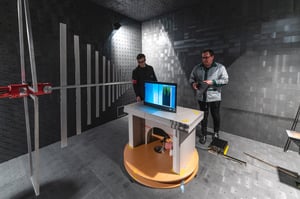
Type approvals / certifications
Monitors used for safety-critical applications, such as navigation or CCTV, must comply with maritime standards.
But certain monitors on board may not necessarily need to meet the same stringent requirements.
Hatteland Technology offers monitors for all onboard applications – type-approved as well as non-type-approved.
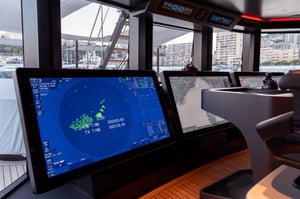
Explore our Marine Monitors
Hatteland Technology manufactures marine-approved monitors for all onboard applications, such as ECDIS, IBS, Automation, and CCTV.
Whether you are looking for standard- or customised units, we are the technology partner you need.
Feel free to browse our selection of monitors via the link below.
